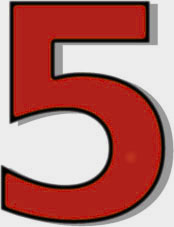THE DETERMINED SPY
Espionage writer Waller’s long narrative begins at the beginning of Frank Wisner’s end: a nervous breakdown culminating in an intervention by three friends in the national security game and a hospitalization for “a complete rest.” Wisner would never quite recover, and he ended his own life after leaving the CIA under duress. Interestingly, Waller notes, the CIA all but expected its field agents to crack up, drink heavily, and require therapy, so it came as no surprise that the agency’s “clandestine service chief was seriously ill.” Wisner had the kind of imagination necessary for his job: He helped set up MKUltra, part of a program comprising scores of top-secret projects, this one involving dosing human subjects with LSD. Recruited into military intelligence during World War II, he saw the work of Soviet intelligence agents up close, which converted him to an implacable anti-communist, fully committed to the Western cause in the Cold War. This commitment played out in part by Wisner’s insistence on hiring former Nazis to spy in the Soviet occupation zone, even as Wisner himself spied on French and British allies, discovering, among other things, that the French were also putting Nazi intelligence veterans to work. After the war Wisner recruited news agencies and film studios to such projects as a conspicuously anti-Stalinist animated version of George Orwell’s Animal Farm. Students of modern intelligence and its political discontents will find an odd continuity in the CIA’s being the target of a jealous J. Edgar Hoover’s FBI, focused especially on rooting out gay agents, while Wisner fell afoul of Joseph McCarthy, even as he was spending his hours organizing such things as an “assassination capability” and executing mischief all over the world.


Espionage writer Waller’s long narrative begins at the beginning of Frank Wisner’s end: a nervous breakdown culminating in an intervention by three friends in the national security game and a hospitalization for “a complete rest.” Wisner would never quite recover, and he ended his own life after leaving the CIA under duress. Interestingly, Waller notes, the CIA all but expected its field agents to crack up, drink heavily, and require therapy, so it came as no surprise that the agency’s “clandestine service chief was seriously ill.” Wisner had the kind of imagination necessary for his job: He helped set up MKUltra, part of a program comprising scores of top-secret projects, this one involving dosing human subjects with LSD. Recruited into military intelligence during World War II, he saw the work of Soviet intelligence agents up close, which converted him to an implacable anti-communist, fully committed to the Western cause in the Cold War. This commitment played out in part by Wisner’s insistence on hiring former Nazis to spy in the Soviet occupation zone, even as Wisner himself spied on French and British allies, discovering, among other things, that the French were also putting Nazi intelligence veterans to work. After the war Wisner recruited news agencies and film studios to such projects as a conspicuously anti-Stalinist animated version of George Orwell’s Animal Farm. Students of modern intelligence and its political discontents will find an odd continuity in the CIA’s being the target of a jealous J. Edgar Hoover’s FBI, focused especially on rooting out gay agents, while Wisner fell afoul of Joseph McCarthy, even as he was spending his hours organizing such things as an “assassination capability” and executing mischief all over the world.



































![How to Find Low-Competition Keywords with Semrush [Super Easy]](https://static.semrush.com/blog/uploads/media/73/62/7362f16fb9e460b6d58ccc09b4a048b6/how-to-find-low-competition-keywords-sm.png)












![How Marketers Are Using AI for Writing [Survey]](https://www.growandconvert.com/wp-content/uploads/2025/03/ai-for-writing-1024x682.jpg)


























































![Ecommerce Customer Journey Mapping — How to Set Potential Shoppers Up to Buy [Tips & Template]](https://www.hubspot.com/hubfs/ecommerce-Sep-13-2023-09-08-01-7144-PM.png)

































